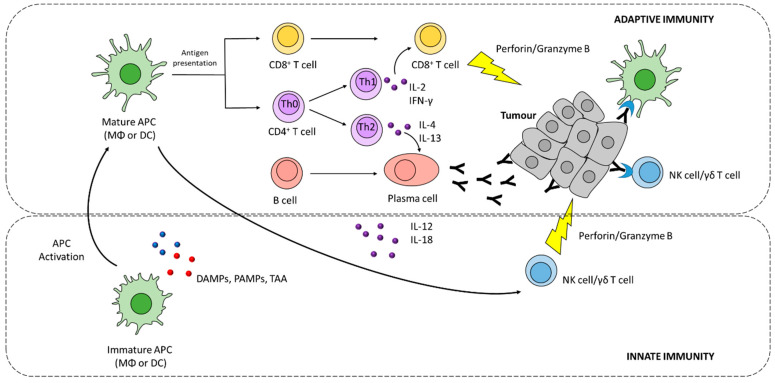Figure 1.
Overview of innate and adaptive anti-tumour immunity. Activated NK cells and γδ T cells can directly recognize and kill tumour cells through the release of perforin and granzyme B. Antigen-presenting cells (APCs), such as macrophages and dendritic cells, represent the main link between innate and adaptive immunity. Resting APCs can be activated by DAMPs and PAMPs, and then migrate to the secondary lymphoid organs where they present antigens and activate lymphocytes (CD8+ and CD4+ T cells, B-cells). CD4+ T cells primarily provide help for B lymphocytes and CD8+ T cells, whereas most CD8+ T cells exhibit cytotoxicity toward tumour cells. On the other hand, B cells are the source of antibodies directed against the tumour, which contribute to tumour recognition and antibody-dependent cell cytotoxicity (ADCC).

